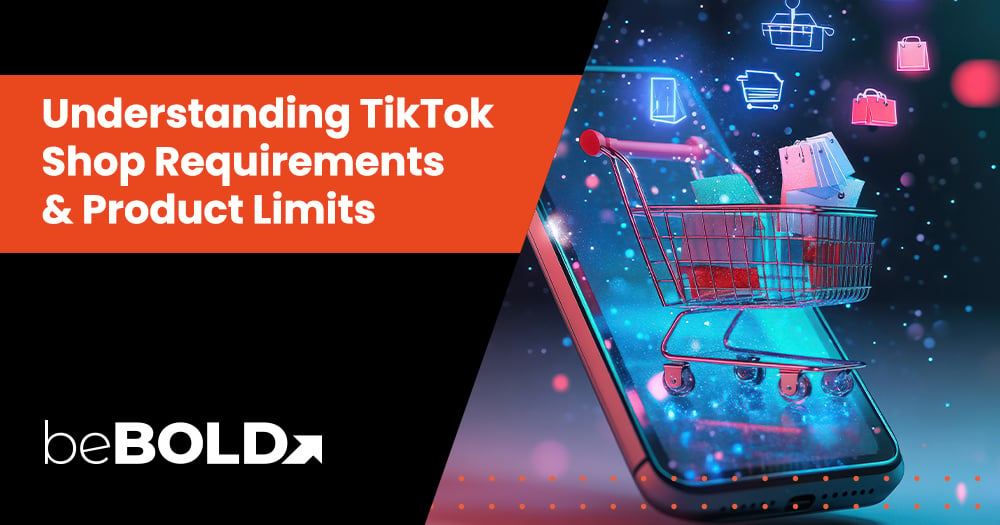Key Highlights
- This guide walks you through the complete process of optimizing Amazon listings to boost search visibility, traffic, and conversions 🚀.
- Start by understanding how the A10 algorithm works and how factors like sales history and engagement impact rankings.
- Then learn how to optimize product titles, bullet points, descriptions, images, and backend keywords to show up in relevant searches.
- Covers pricing strategies and A+ Content to improve your offer’s appeal and drive conversion rates.
- Tips to avoid common listing mistakes—like keyword stuffing, poor-quality images, or mismatched pricing—that can hurt visibility.
- Track key performance metrics such as CTR, CVR, and organic rankings to evaluate your optimization efforts.
- Get answers to common questions about listing updates, keyword changes, A+ Content, and staying compliant with Amazon policies.
- beBOLD Digital provides expert support to help you optimize listings for visibility, conversions, and long-term success on Amazon.
Do you know that selling products on Amazon has shifted from simply putting up your offerings to a dynamic, competitive game that necessitates strategic optimization? Yes, as an Amazon seller, understanding how to optimize your listings effectively for the Amazon search engine is crucial for your online store's success.
Amazon SEO is no longer something you can overlook, mainly as Amazon updates its algorithms and matches sellers' products with shopper search trends. In this blog, we take an in-depth look at tried-and-tested strategies for Amazon product listing optimization to boost sales and fundamentally transform the trajectory of your business. So let's get started!
What is Amazon Listing Optimization?
In any crowded marketplace like Amazon, visibility is key. Amazon Product Listing Optimization ensures your products appear prominently in Amazon's search results when customers seek out related items. It involves enhancing your product listing title, description, bullet points, search terms, and all other details relevant to your product listing optimization strategy.
A properly optimized listing can grab customer attention, influence purchasing decisions, and help you outrank competitors. It increases the relevance of your product, leading to improved search rankings, increased traffic to your product detail page, and, ultimately, higher sales.
Why is Amazon Listing Optimization Important?
Amazon listing optimization ensures your products appear in relevant searches, attracting more visibility and higher conversions. Well-optimized listings with strong list of keywords, high-quality images, and engaging descriptions increase the chances of ranking higher and driving sales.
Without optimization, even great products may struggle to reach potential buyers. By continuously refining titles, bullet points, and backend search terms, sellers can improve their organic rankings, reduce reliance on ads, and maximize profitability.
The Role of Amazon’s A10 Algorithm
Amazon’s A10 algorithm determines which products appear in search results based on relevance, sales history, and customer engagement. Unlike A9, A10 places more emphasis on organic performance rather than paid advertising, making SEO-driven optimization essential.
To rank higher, sellers must focus on keyword relevance, strong sales velocity, high click-through rates (CTR), and positive customer interactions. A well-optimized listing helps meet these criteria, increasing visibility and long-term success.
Step-by-Step Guide to Amazon Listing Optimization
Optimizing an Amazon listing is an intricate process that requires a blend of technical Search Engine Optimization knowledge and marketing savvy. In the following sections, let's look into the eleven important steps that can ultimately drive you more sales.
1. Conduct Keyword Research

Thorough keyword research is the foundation of a successful Amazon listing. Identifying the right keywords ensures your product appears in relevant searches, driving more traffic and conversions. By combining Amazon’s built-in tools with third-party resources, you can develop a strong keyword strategy that enhances your visibility and competitiveness.
Using Amazon Auto-Suggest for Keyword Ideas
Amazon’s auto-suggest feature provides real-time insights into what shoppers are searching for. Simply start typing a relevant keyword in the Amazon search bar, and it will generate a list of popular search terms.
These suggestions come directly from buyer behavior, making them a valuable resource for discovering high-intent, long-tail keywords that can improve your listing’s reach.
Utilizing Third-Party Keyword Research Tools
For a more data-driven approach, third-party tools like Helium 10 or MerchantWords help analyze keyword volume, competition, and trends. These tools allow you to:
- Identify high-ranking keywords used by competitors.
- Discover low-competition keywords with strong conversion potential.
- Track keyword performance over time to optimize your listings.
2. Optimize Product Titles

Crafting compelling Amazon product titles involves striking a delicate balance between incorporating relevant keywords, including the most important keywords for visibility, and ensuring readability to attract customers while adhering to the title character limit. A poorly optimized title can hurt search rankings, reduce click-through rates, and make a product less discoverable on Amazon.
Check out the below product title example:

In the above picture, the Naturehike brand’s short title lacks high-value keywords, limiting its visibility. This makes it hard to rank on Amazon. To compete, they need a keyword-rich title, better content, and stronger branding to stand out.
Check the below example to get a fair idea of how Nevo Rhino has done it:
Here, the title does a great job of combining clarity, relevance, and keyword strength. It immediately tells the shopper what they’re getting—a lightweight hydration backpack with a 2L water bladder.
Besides, it also smartly highlights versatility, making it ideal not just for running, but also for cycling, hiking, and even raves, which broadens appeal.
By including “for men and women,” it assures inclusivity without sounding forced,
Additionally, you must include product title optimization by:
- Utilizing high-traffic keywords in titles while maintaining coherence and relevance to the product.
- Avoid keyword stuffing and prioritize clarity to entice potential buyers effectively.
- A well-crafted title enhances search algorithm visibility and entices online shoppers to click on your listing, ultimately boosting your sales.
- Remember, the title is the first introduction to your product, making it a critical element in driving conversions.
Below are the Do’s and Don'ts to keep in mind when optimizing product titles:
Do’s
- Start with key keywords for better ranking.
- Avoid repetition of words.
- Keep titles readable, not just a keyword list.
- Use common abbreviations (e.g., oz instead of ounces).
- Follow Amazon’s format: Brand + Product + Key Features.
Don’ts
- No promotional phrases like “best seller.”
- Limit punctuation to dashes (-) or pipes (|).
- Avoid irrelevant details that don’t aid searchability.
- Don’t add brand names unless required.
3. Crafting Compelling Bullet Points
Your bullet points, also known as key product features, offer a quick scan of your product's most noteworthy attributes. They allow potential customers to understand your product better. Aim to create concise yet informative bullets outlining your product's benefits. Take note of the following points while crafting your bullet points:
- Start each bullet with the most important feature or customer-focused benefit
- Follow up with a short sentence that shows how it solves a problem or improves their experience
- Keep each bullet to about two lines using clear, simple language
- Include relevant product details such as quantity, sizing, colors, or materials
- Add secondary keywords naturally to help improve search visibility
- Don’t just say your product is of higher quality. Prove any quality claims with specifics like materials, durability, or certifications
- Maintain a consistent structure across all bullet points for a smooth reading experience
- Use benefit-driven copy that gives shoppers a clear reason to choose your product
4. Writing an Effective Product Description

Craft compelling Amazon product descriptions highlighting key features to captivate potential customers. Informative descriptions can influence buying decisions, so emphasize unique selling points. You must also:
- Use persuasive language to showcase product benefits and stand out from competitors.
- Ensure clarity in communicating key features for customer comprehension.
- By highlighting notable attributes, you enhance the customer experience and boost sales.
- Remember, an engaging product description is crucial for listing optimization on Amazon and driving conversions
Enhanced Brand Content (A+ Content)
Enhanced Brand Content (EBC) or A+ Content offers an opportunity to provide additional information about your product and brand via visually appealing and detailed content. Reasons why A+ content stands out:
- Available exclusively to sellers enrolled in Amazon's Brand Registry, A+ Content allows you to include images, text placements, and comparison charts to captivate potential customers and highlight the unique features of your product.
- Including A+ Content can significantly boost your listings' conversion rate and give you a competitive edge.
- Showing your brand's story and unique attributes through A+ Content provides a richer shopping experience, encourages brand loyalty, and ultimately boosts sales.
Below are the Do’s and Don'ts to keep in mind when writing product description:
Do:
- Keep it clear, concise, and factual.
- Break paragraphs for readability.
- Include brand, model, series, color, and size.
- Capitalize the first letter of each sentence.
- Check for grammar and spelling errors.
Don’t:
- Use time-sensitive or subjective terms (e.g., “biggest deal of the year”).
- Add shipping, promotions, emails, or web addresses.
- Use HTML tags, symbols, or special characters.
5. Adding High-Quality Product Images and Videos
Selecting high-quality images is crucial for Amazon product photography listings. To meet Amazon's image guidelines:
- Ensure images have a white background, with the product taking up 85% of the frame.
- High-resolution images, including the main image, increase visibility and credibility.
- Include multiple angles and close-ups to showcase details.
- Images displaying product features help customers make informed decisions.
- Following these criteria enhances product appeal and can positively impact conversion rates.
Below are the Do’s and Don'ts to keep in mind when adding high-quality images to your listing:
Do’s
- Maintain 72 PPI resolution with at least 1000 px on the longest side.
- Use bright white lighting for clarity.
- Center the product in the frame.
- Use only JPEG (.jpg) format for images.
- Include infographics to highlight benefits.
- Add a tagline for durability or key features.
Don’ts
- No backgrounds in the main image (only secondary images can have them).
- No logos, text, or watermarks on images.
- Don’t display multiple items if selling a single product.
- Don’t include accessories or extra items in the main image.
- Avoid showing multiple angles in the main image.
Below are Amazon’s complete product image guidelines:
- Your product images must clearly and accurately show the exact item being sold, aligning with the title and product description
- The main product should occupy at least 85% of the frame for clear visibility and focus
- For enhanced zoom functionality (which has been proven to improve conversions), images should be at least 1600 pixels on the longest side. The minimum for Zoom is 1000px, and 500px is the absolute minimum size allowed on-site
- Images must be sharp, well-lit, and free from distortion—no blurriness, pixelation, or jagged lines
- File formats accepted include JPEG (.jpg/.jpeg), TIFF (.tif), PNG (.png), and non-animated GIFs (.gif). JPEG is Amazon’s preferred format
- Avoid using logos, badges, or any branding that could resemble or imply Amazon endorsement—this includes phrases like “Amazon’s Choice” or “Best Seller”
- Human models should not be used for baby or children’s items like swimwear, leotards, or underwear
- Keep your images professional—nudity or sexually suggestive visuals are strictly prohibited
- The longest side of any image must not exceed 10,000 pixels
6. Optimizing Pricing Strategy
Pricing your products competitively is vital for standing out in the crowded Amazon marketplace. Note the following points:
- Consumers tend to compare prices before deciding on a purchase.
- Overpricing can deter potential buyers, while underpricing can hurt your profit margins significantly. It's essential to strike a balance between fair pricing and profitability.
- Keep track of your competitors' prices and adjust yours accordingly.
- Moreover, consider factors like costs, market demand, seasonality, and your overall business strategy while deciding on pricing.
- Remember, competitive pricing doesn't necessarily mean the cheapest price; instead, it refers to pricing that provides value for money in the eyes of your customers.
7. Managing Customer Reviews and Ratings

Foster positive customer engagement by encouraging reviews, which boosts credibility and trust. Here you must:
- Prompt satisfied buyers to share their experiences for social proof, enhancing customer satisfaction.
- Respond promptly and professionally to negative feedback to showcase exceptional customer service.
- Actively engage with customers through Amazon's platform to enhance satisfaction and address concerns swiftly, demonstrating your commitment to an excellent customer experience.
- Feedback is used to refine products and services, leading to increased sales and brand loyalty.
8. Backend Search Terms & Hidden Keywords
Optimizing backend search terms helps improve product discoverability without cluttering visible content. Amazon indexes these hidden keywords, allowing your product to appear in more relevant searches. Key elements to include:
- Capture different ways shoppers search for your product.
- Target specific phrases that wouldn’t fit naturally in titles or bullet points.
- Amazon doesn’t always auto-correct, so adding these can boost visibility.
- Useful for international audiences searching in different languages.
- Some categories permit including competitor names to appear in related searches.
Below are the Do’s and Dont’s to keep in mind when adding backend search terms:
Do:
- Add primary keywords not used in the title.
- Include relevant secondary search terms.
- Use abbreviations, misspellings, and product applications.
Don’t:
- Repeat keywords already in the title.
- Mention the seller’s name.
- Add the brand name (Amazon detects it automatically).
- Use subjective terms like “best” or “on sale.”
Common Mistakes to Avoid in Amazon Listing Optimization
Even well-optimized Amazon listings can fail if common mistakes are overlooked. Avoiding these errors ensures higher search rankings, better conversions, and increased sales in the competitive marketplace.
1. Keyword Stuffing & Poor Readability
Overloading a listing with keywords in an attempt to rank higher often backfires. Amazon’s algorithm penalizes excessive keyword use, and poor readability discourages potential buyers.
Instead of stuffing keywords unnaturally:
- Focus on clear, engaging content that seamlessly integrates relevant search terms.
- A well-structured title and product description should inform and persuade customers while also being optimized for Amazon’s search engine.
2. Not Using High-Quality Product Images
Product images play a crucial role in a customer’s purchase decision. Low-resolution or unclear images can reduce trust and lower conversion rates.
Amazon recommends:
- Use at least 1000x1000 pixels to enable zoom functionality, helping shoppers examine products in detail. Using multiple angles, lifestyle images, and infographics showcasing key features can increase engagement and improve sales.
- A strong visual presentation makes your product stand out in search results.
3. Ignoring Customer Reviews & Feedback
Customer reviews directly impact a product’s ranking and sales performance. Negative feedback left unaddressed can damage credibility and deter potential buyers.
Make sure to:
- Actively responding to reviews, addressing concerns, and encouraging satisfied customers to leave positive feedback helps build trust and social proof.
- Engaging with customers and improving based on their feedback enhances both your reputation and long-term sales potential.
4. Not Updating Listings Regularly
Amazon’s marketplace is constantly evolving, and listings that remain stagnant may lose visibility. Trends, keywords, and customer preferences change over time, making regular updates essential.
You must:
- Monitor search term reports, adjusting keywords, refreshing images, and refining product descriptions can help maintain strong rankings and consistent conversions.
- Keeping listings optimized ensures they stay relevant and competitive in an ever-changing market.
Amazon Listing Optimization Tools & Software
Using the right tools can streamline Amazon listing optimization, improving keyword targeting, competitor analysis, and overall ranking. These tools help sellers refine their listings, track performance, and boost conversions.
- Helium 10 – Advanced keyword research, listing optimization, and competitor analysis.
- Viral Launch – AI-powered keyword research, competitor tracking, and listing analysis.
- ZonGuru – Data-driven insights for keyword optimization, PPC keyword research, and customer engagement.
- DataHawk – SEO tracking, sales analytics, and competitor benchmarking.
- Sellics – All-in-one tool for keyword ranking, ad optimization, and performance monitoring.
How to Measure the Success of Your Listing Optimization?
Tracking the proper metrics helps determine whether your listing optimizations drive visibility and sales. Sellers can make informed adjustments to improve rankings and conversions by analyzing performance data.
Key Performance Indicators (KPIs) to Track
- Click-Through Rate (CTR) – Measures how often shoppers click your listing after seeing it in search results. A low CTR may indicate weak images, poor titles, or unoptimized keywords.
- Conversion Rate (CVR) – Tracks how many clicks result in actual purchases. Higher CVR means your listing is effectively converting visitors into buyers.
- Organic Rankings – Monitoring keyword rankings helps assess whether your optimization efforts are improving visibility.
- Sessions & Page Views – Indicates how much traffic your listing receives and how engaged potential buyers are.
- Return on Ad Spend (ROAS) – Evaluates the effectiveness of paid campaigns in generating sales.
Using Amazon Brand Analytics & Business Reports
- Amazon Brand Analytics provides valuable insights into customer search behavior, top-performing keywords, and competitor performance.
- Business Reports help analyze traffic, sales trends, and customer engagement, enabling data-driven listing improvements.
- Search Term Reports reveal which keywords drive conversions, allowing for precise optimization.
Hiring an Amazon Agency for Listing Optimization
Optimizing Amazon listings requires expertise, time, and constant adaptation to algorithm changes. Without a well-structured strategy, your products may struggle to rank and convert. beBold Digital simplifies this process with data-driven solutions that enhance visibility, improve rankings, and maximize sales potential.
When Should You Consider Hiring an Agency?
If your listings suffer from low rankings, poor conversion rates, or high ad spend with little return, it’s time to seek expert help. beBold Digital manages everything from keyword research and listing optimization to backend enhancements, ensuring your products reach the right audience and drive more sales. Our team continuously monitors performance, making data-driven adjustments for long-term success.
What to Look for in an Amazon SEO Agency?
A reliable agency should offer proven results, deep Amazon expertise, and data-backed strategies. beBold Digital specializes in competitor analysis, keyword refinement, and high-converting content that sets your products apart. We focus on continuous optimization, helping you stay ahead of Amazon’s ever-changing algorithms while increasing organic traffic and conversions.
Additionally, a well-rounded Amazon strategy goes beyond SEO alone. Combining organic optimization with a strong PPC approach ensures sustained visibility and sales. At beBold Digital, we integrate Amazon SEO and PPC strategies to help brands achieve long-term growth while maximizing short-term revenue through targeted advertising.
Amazon’s marketplace is also dynamic, and staying ahead requires continuous refinement. From bid adjustments to keyword expansion, we ensure your campaigns evolve with changing trends. Explore our Amazon PPC optimization tips to enhance your ad performance and maximize return on investment.
How beBold Digital Can Actually Helpin Optimizing the Listings?
With a track record of successfully optimizing Amazon listings, beBold Digital provides hands-on, tailored solutions that ensure higher rankings and better conversions. Our comprehensive approach includes listing audits, keyword research, A+ Content creation, and performance tracking.
Whether you're launching a new product or improving an existing one, we help you achieve sustainable growth and increased profitability. Partner with beBold Digital today and allow us to help you navigate your way to success on Amazon. Contact us now!
Frequently Asked Questions
How often should I update my product listings?
Regular updates keep your listings competitive and aligned with Amazon’s algorithm changes. Refresh keywords, images, and descriptions every few months or when performance metrics indicate a need for improvement.
What is Amazon A+ Content and how does it help?
Amazon A+ Content allows sellers to add rich media, enhanced images, and comparison charts to their product pages. This improves customer engagement, boosts conversions, and helps establish brand credibility.
How does Amazon's A10 algorithm affect listing optimization?
The A10 algorithm prioritizes organic relevance, sales history, and customer engagement over paid ads. Optimizing keywords, maintaining strong sales velocity, and driving external traffic can improve your rankings.
Can I optimize my listings for multiple keywords?
Yes, by strategically placing primary and secondary keywords in the title, bullet points, descriptions, and backend search terms, you can rank for multiple searches without keyword stuffing.
What are the best Amazon listing tools?
Popular tools like Helium 10, Viral Launch, and Sellics help with keyword tracking, competitor analysis, and listing optimization, making it easier to improve product visibility and performance.
Conclusion: Achieving Listing Optimization Success
Optimizing Amazon listings is an ongoing process that requires continuous monitoring, testing, and refinement. From keyword research and compelling titles to product reviews and competitive pricing, every detail impacts your ranking and sales.
Done right, this leads to higher visibility, better conversions, and increased revenue. Implementing the right strategies ensures long-term success in Amazon’s competitive marketplace.
Need expert help? Let beBold Digital optimize your listings for maximum sales!










Comments